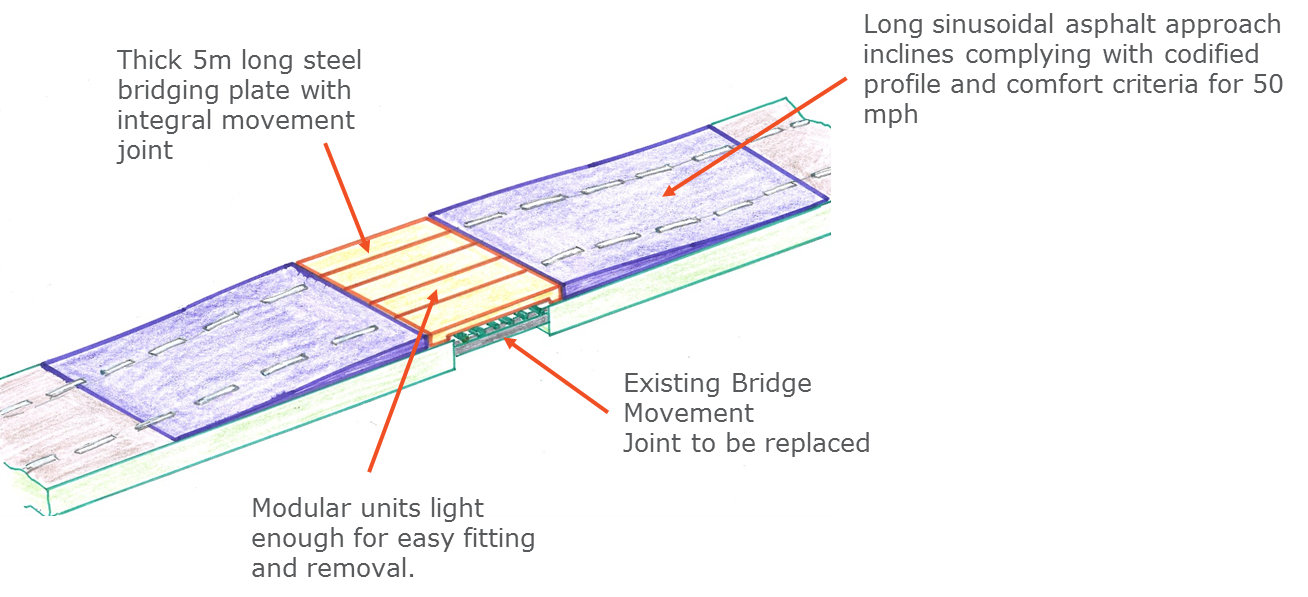How To carry out maintenance work with minimal traffic disruption
Owners and operators of urban infrastructure find themselves in a difficult situation. Urban populations are expanding rapidly, meaning much of our infrastructure is handling traffic far exceeding that envisaged at the time of design. This leads to increased rates of degradation and fatigue.
Furthermore, due to the impact of exhaust fumes on air quality, congestion has become a health and environmental issue, as well as an economic one. This makes it less acceptable to close highways or implement congestion-creating speed restrictions and lane closures. – even for vital maintenance work.
In other words; with urban road networks at maximum capacity, owners and operators need to find ways of keeping traffic flowing while they carry out maintenance work.
Closing the UK's most important bridge was not an option
Let’s take a closer look at one such example.Recently, Connect Pus, the operator of the Queen Elizabeth II (QE2) Bridge in London, UK, needed to carry out vital maintenance work on the bridge, which carries 80,000 vehicles a day.
Opened in 1991, the cable-stayed bridge carries the clockwise carriageway of London's orbital highway, the M25, over the River Thames.
Due to age and fatigue, the bridge's six movement joints needed to be replaced, requiring the removal of deck sections up to 4.5m long.
However, closing the UK's most important bridge to carry out the work was not an option.
Challenging the industry standards
The standard industry solution at the time – deploying steel plates over the joints – had a number of drawbacks: they restricted vehicles to 30mph, could not span double joints, did not cater for long span bridge movement and can block access from one side.This option was clearly not going to meet the requirements for the QE2 Bridge.
A new solution was needed that did not require severe speed restrictions, could accommodate up to +/-350mm longitudinal movement and allowed work to be undertaken while traffic was flowing.
New solution kept traffic disruption to a minimum
In close collaboration with our client Connect Plus and contactor Jackson we developed an alternative solution: a temporary over-bridge system that allowed traffic to flow while the existing movement joint was removed from the underside of the bridge.
The temporary system (pictured below) comprised two sinusoidal asphalt approach inclines and a 5m long central steel bridging plate with integral movement joint. Light enough for easy fitting and removal, the modular units were installed over the existing joint during a single night closure.
Once the old joint was removed, the new permanent joint was installed during a single night closure, meaning disruption to traffic was kept to an absolute minimum.

500t of carbon and millions of pounds saved
By maintaining traffic flow and speed, the bespoke over-bridge system saved over 500t of carbon and millions of pounds in road closure costs. And, crucially, the repair work was invisible to motorists.The system enables the replacement of movement joints while maintaining high-speed traffic flow (50 mph), and it is now used across the M25 and beyond.
In recognition of its game-changing impact, the project won Temporary Works Initiative of the Year at the 2015 British Construction Industry Awards.
Meet the expert
My primary field of expertise is the strengthening, refurbishment and upgrade of bridges, with particular focus on long span, historic and critical infrastructure structures.This field takes me from projects on my doorstep, to those on the other side of the world. There are never two problems the same, and rarely an easy solution. It is a never-ending challenge that weaves through different cultures and different places.
Get in contact

Robert Percy
Director
Bridges International, United Kingdom
Tel:
+44 2079407600
rap@cowi.com